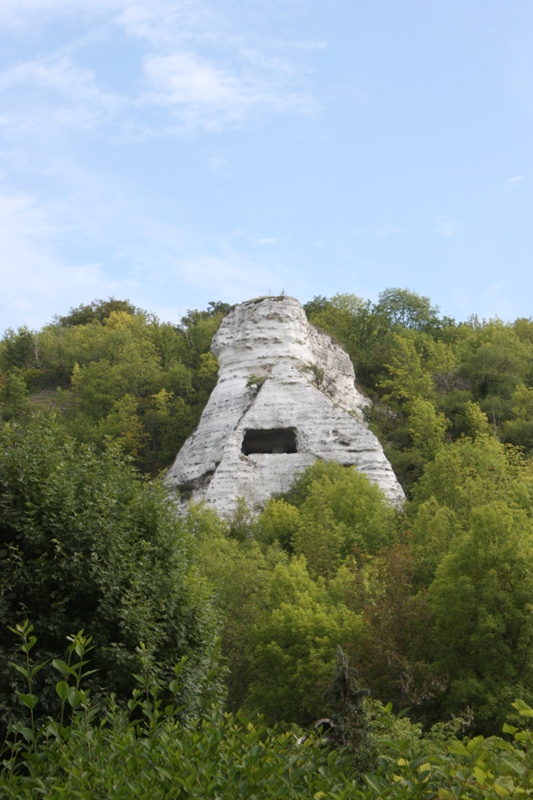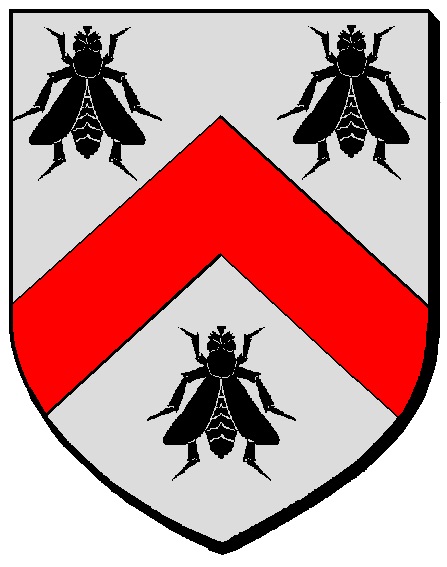
Sentiers du Patrimoine ®
Haute-Isle

Prendre le chemin qui part en face de la Mairie en direction de la Seine. Prendre le premier chemin à gauche, sur environ 1 km, jusqu'au lavoir.
Prochain point : lat="49.0791136071033" lon="1.67108081497345"

This is a man-made structure was excavated into a rocky limestone outcrop overhanging the Seine. It consists of three levels of caves or “boves”. The discovery of money in one of the openings, named “la Salle du chef normand” (the Norman chief's room) indicates that the boves were inhabited at least since the early middle ages.
In the 18th century, the habitation was transformed into a dovecote by the Duchess of Enville (1743), for her experiences with new crops and agricultural techniques. At that time, chemical fertiliser had already been invented. But dovecotes were still used to raise pigeons, highly valued for their fine meat and for the collection of guano, used as an organic fertiliser. Dovecotes varied in size according to the surface area of the attached farmland. To gain the right balance between the need to preserve crops and feed the pigeons, the number of pairs (one per boulin, or hole) was limited to four per hectare.
At the beginning of the 20th century, Doctor Gaudichard acquired the dovecote, showing it to numerous visitors, all fascinated by this unusual and mysterious place. He also lived for a time in the adjoining boves before building a “merovingian style” house with more modern comforts, halfway up the hill. Today we can still see the traces of a ancient gate on the southern facade and also a structure of rough-cut limestone and wooden slats, as well as boulins (niches for pairs of pigeons) in the walls of the dovecote.


